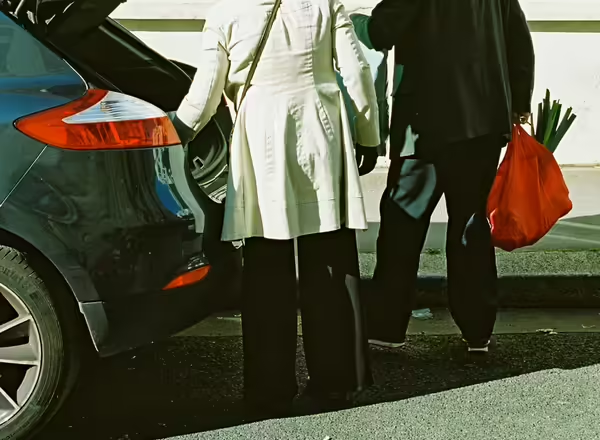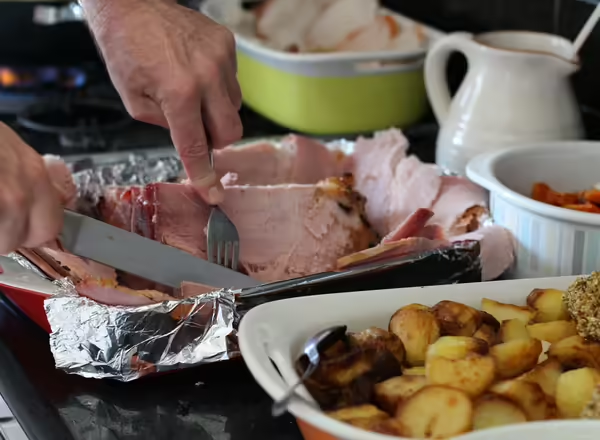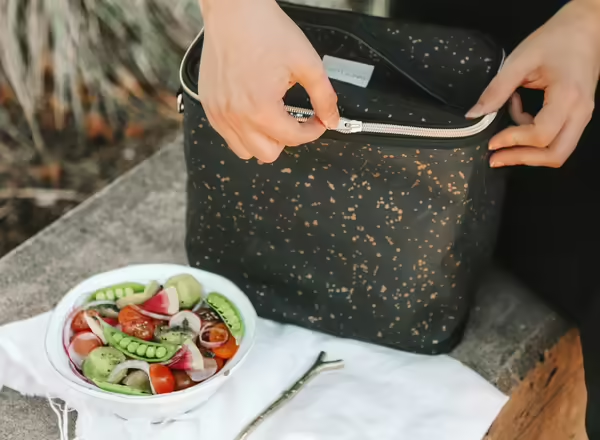
Traveling with Meat
Do I need to worry about how long my meat is in the car?
Time and temperature matter when it comes to the risk of foodborne illness. Take steps to transport both raw and cooked meats safely.

It's the job of your local grocer and butcher counter to handle meat safely when the meat in their store. Once the meat is in your hands, now it is your responsibility to transport it safely home.
- Make grocery shopping your final errand. Do other errands first, like the going to the ATM or pumping gas. When grocery shopping is your last task, you reduce the amount of time your meat and other perishable groceries will be without refrigeration.
- Separate meat from other foods in your shopping cart to prevent meat juices that might leak from their packaging and contaminate your other foods.
- Put meat in a cold area during transport. Try an hard-sided cooler or an insulated tote bag. If you're traveling longer than 30 minutes, pack coolers and totes with ice or frozen cold packs so meat stays cold.
- Put meat in cold storage at home immediately. Cold and frozen foods should be put into the refrigerator and freezer first, before shelf-stable foods like boxes of cereal.

We bring meals to our farm families during planting and harvest. We welcome new parents with food after giving birth. We offer to bring a main dish, side dish or dessert to a holiday gathering. How do we safely transport meat?
- Traveling with hot food. If you are traveling with hot foods, travel in a way that keeps food hot - 140°F or above.
- Try a pre-warmed slow cooker or roasting pan. Fill the container with boiling water, let stand for a few minutes, empty and then put in the hot, cooked meat. Add the lid to keep in the heat.
- Use a car power adapter to connect your vehicle to travel food warmer or to a cooking appliance, like a slow cooker. Continue cooking the food or set it on a "warm" feature to stay at 140°F or hotter.
- In either methods, wrap the container in a clean bath towel for added insulation and to protect from spills.
- Traveling with reheated foods. Let's say you made a pot of chili last night and are reheating leftovers to share with your elderly parents. Reheat the chili (and all leftovers) to 165°F. Pack the hot chili in a method above so it stays 140°F or hotter during the trip.
- Travel with raw meat. When taking uncooked meat to be cooked at someone's home, keep the meat cold at 40°F or lower. Use a hard-sided cooler with hard-sided ice packs for easy cleaning and sanitizing of any meat juices that leak from the packaging. If packing with ice, do not reuse the ice or add to drinks.

It's easy to be food-safe at work or school when your meal can go straight into a refrigerator. But when no refrigerator is available, try these tips.
Pack meals with cold foods.
- Use an insulated lunch bag or tote, which keeps foods colder than a paper lunch bag or plastic grocery bag.
- To keep the foods cold for hours, add ice packs or use frozen juice boxes or frozen water bottles. (Since water expands as it freezes, open and dump out a bit of water from plastic water bottles to prevent the bottle from bursting.)
- If packing your lunch the night before, store in the refrigerator and leave the lunch bag or tote open. Close the tote before traveling.
Pack meals with hot foods.
- Add hot food only to a hot thermos or insulated container. To preheat the thermos, add boiling water, let stand for a few minutes, empty, and then put in the hot food.
- Keep the insulated container closed until you eat.
- Store the insulated container at room temperature, not inside the insulated lunch bag with the cold foods.

Whether it's your family sending you home with holiday leftovers, or the extra food from your favorite restaurant you'll eat another day, it's all about time when traveling with leftovers.
- Long trips vs short trips. If it will take you less than 30 minutes to get home, put those foods in a cool location and put food in the refrigerator as soon as you get home. If it will take longer, consider not saving the leftovers or stopping for ice to keep the leftovers cool until you get home.
- Throw away at 2 hours. Throw away leftover foods that have been at room temperature for more than 2 hours. Bacteria grow quickly at room temperature and may be unsafe to eat at 2 hours. Drop the time to 1 hour if the temperature is over 90°F.

Summer picnics and barbeques and camping take eating outdoors. Since you have fewer modern amenities, be food-safe when transporting meat.
Packing a cooler.
- Use a cooler for trips that will be two hours or longer.
- Fill each cooler as much as possible. Full coolers stay colder longer than partially packed coolers. Fill any empty space with ice.
- Put raw meats in a separate cooler from prepared foods, like potato salad, cut fruit, and hamburger buns. If using one cooler for all foods, add meats to the bottom and put in well-sealed containers to prevent meat juices from dripping onto prepared foods.
- In hot weather above 90°F, put raw meat and other perishable foods back in the cooler within 1 hour after eating and keep in a cool, shady spot. (While shady, a vehicle will get too hot.)
Keep leftovers safe.
- Add leftover cooked meat to clean containers and place in a cooler on ice immediately.
- Throw away cooked meat left out longer than 2 hours, or longer then 1 hour when temperatures are above 90°F.
- Check the cooler when you get home. Some ice should still be solid and cooked meat should be cool to the touch. Move into a refrigerator and use within 3 or 4 days.
- AskUSDA, USDA
- Food Safety While Hiking, Camping & Boating, USDA, 2022
- Holiday Silver Lining: Avoiding Foodborne Illnesses While Traveling with Food, USDA, 2017
- Keeping "Bag" Lunches Safe, USDA, 2016